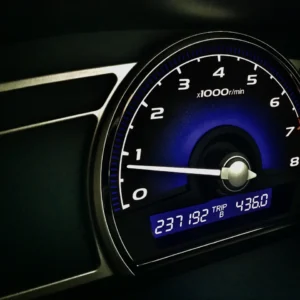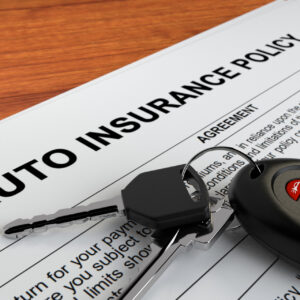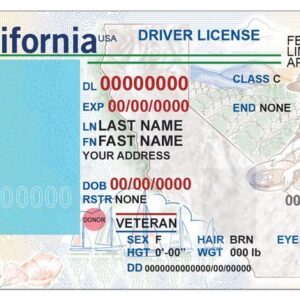Introduction
Navigating the world of auto insurance can often feel like traversing a labyrinth of legalese, coverage options, and premium quotes. Yet, understanding the minimum auto insurance in Arizona isn’t just about checking a box for compliance—it’s about protecting yourself, your passengers, and your financial future on the open road. In this comprehensive guide, we’ll explore Arizona’s statutory requirements, explain why they matter, and share practical tips to help you stay both legally compliant and budget-savvy.
What Is the Minimum Auto Insurance in Arizona?
Arizona law mandates that every driver carry a minimum level of liability insurance. This requirement is designed to ensure that, in the event of an at-fault accident, there are funds available to compensate victims for injuries and property damage. According to the Arizona Department of Insurance and Financial Institutions, the minimum liability coverage numbers are:
| Coverage Type | Minimum Amount (USD) | Description |
|---|---|---|
| Bodily Injury per Person | $15,000 | Covers medical expenses for each individual injured |
| Bodily Injury per Accident | $30,000 | Total medical coverage per accident, regardless of number injured |
| Property Damage | $10,000 | Pays for repairs/replacement of other party’s property |
Table 1: Arizona’s minimum liability insurance requirements (Arizona DOI).
Understanding Liability Coverage
Liability coverage is the cornerstone of Arizona’s auto-insurance laws. It breaks down into two major components:
- Bodily Injury Liability (BI):
- Per Person: If you’re at fault in an accident, this covers up to $15,000 of the other party’s medical bills (e.g., hospital stays, rehabilitation).
- Per Accident: Caps at $30,000 total, even if multiple people sustain injuries.
- Property Damage Liability (PD):
- Covers damage you cause to another party’s vehicle or property, up to $10,000.
These limits—often denoted “15/30/10”—are the legal floor in Arizona. Driving with less than these amounts can result in penalties ranging from fines to license suspension.
Why Minimum Auto Insurance Requirements Matter
Although meeting the bare minimum is legally required, the true purpose extends beyond compliance:
- Financial Protection: Liability limits ensure that victims of accidents aren’t left footing medical or repair bills out of pocket.
- Legal Safeguard: Driving uninsured or underinsured in Arizona can lead to license suspension, hefty fines, and increased future premiums.
- Peace of Mind: Knowing you’ve met state requirements allows you to drive confidently, free from the worry of catastrophic expenses.
Research shows that states with strict minimum requirements tend to have lower rates of uninsured drivers and fewer post-accident litigation cases, translating to a more predictable insurance market overall.
Consequences of Driving Uninsured or Underinsured
Failing to maintain at least the minimum coverage can trigger severe repercussions:
- Fines & Penalties: First-time offenders may face fines up to $500, court costs, and mandatory proof of future insurance (Arizona Revised Statutes §28-4138).
- License & Registration Suspension: Your driving privileges—and vehicle registration—can be suspended until you reinstate proper coverage.
- SR-22 Requirement: You may be forced to file an SR-22 form (proof of financial responsibility) for three years, which often hikes premiums significantly.
- Liability Gaps: In the event you’re at fault, any damages exceeding your policy limits become your personal liability, potentially leading to wage garnishment or asset seizure.
Factors Influencing Arizona Auto Insurance Rates
Even if you opt for minimum coverage, premiums can vary widely based on:
- Age & Driving Experience: Younger drivers typically pay more due to statistically higher accident rates.
- Vehicle Make & Model: High-performance or luxury cars often attract higher premiums.
- Driving Record: Tickets, accidents, and DUIs can spike rates.
- Location: Urban areas in Phoenix or Tucson generally have higher rates than rural regions due to increased traffic and theft risks.
- Credit Score: In Arizona, insurers may use credit-based insurance scores to help determine premiums.
- Annual Mileage: More time on the road equates to greater exposure, nudging premiums upward.
Tips for Meeting the Minimum and Saving Money
Finding the right balance between compliance and cost-effectiveness requires a strategic approach:
- Shop & Compare Quotes:
- Use online tools (e.g., NerdWallet) to get multiple quotes quickly.
- Bundle Policies:
- Combining auto with homeowners or renters insurance can lead to bundled discounts.
- Maintain a Clean Driving Record:
- Avoid traffic violations and complete defensive-driving courses for potential rate reductions.
- Raise Your Deductible:
- A higher deductible lowers your premium, but ensure you have savings to cover it if needed.
- Ask About Discounts:
- Inquire about good-student, multi-vehicle, low-mileage, and affinity-group discounts.
- Review Annually:
- Life changes (marriage, relocation, new vehicle) can open new savings opportunities.
Comparing Arizona Minimums to Other States
To put Arizona’s requirements into perspective, consider this comparison:
| State | BI per Person | BI per Accident | PD |
|---|---|---|---|
| Arizona | $15,000 | $30,000 | $10,000 |
| California | $15,000 | $30,000 | $5,000 |
| Texas | $30,000 | $60,000 | $25,000 |
| Florida | $10,000 | $20,000 | $10,000 |
Table 2: Minimum liability requirements in select states.
While some states (e.g., Texas) require higher limits, others (e.g., Florida) mandate less property-damage coverage than Arizona. Knowing these differences is crucial if you frequently cross state lines.
Debunking Common Myths About Arizona Auto Insurance
- Myth 1: “Minimum coverage is always the cheapest.”
- Reality: Insurers often price minimal plans at a percentage above their recommended packages to incentivize customers to upgrade.
- Myth 2: “Your credit score doesn’t influence rates in Arizona.”
- Reality: Most major insurers factor in credit-based insurance scores when calculating premiums.
- Myth 3: “Uninsured motorist coverage isn’t necessary if you have good liability limits.”
- Reality: Uninsured/Underinsured Motorist (UM/UIM) coverage protects you if the at-fault driver lacks sufficient insurance—highly advisable in a state with roughly 14% uninsured drivers.
Frequently Asked Questions
- Can I drive without insurance for a short period in Arizona?
No. Even temporary lapses can trigger penalties and impair your ability to reinstate coverage. - What is an SR-22 form?
A certificate of financial responsibility filed by your insurer to prove you carry the state-mandated minimum coverage. - Is rental-car coverage included in Arizona policies?
It’s optional. Check your policy or purchase a standalone endorsement if needed. - How does Arizona handle no-fault claims?
Arizona is an “at-fault” state, meaning the driver deemed responsible pays for damages through their liability insurance.
Conclusion
Understanding what’s the minimum auto insurance in Arizona is more than a compliance exercise—it’s about owning your responsibility on the road. By maintaining at least the 15/30/10 coverage, you safeguard both yourself and others from the financial fallout of accidents. Yet, with smart shopping, strategic discounts, and periodic policy reviews, you can often attain more robust protection without draining your wallet.
Next time you renew or shop for a new policy, remember: the state-mandated minimum is just the starting line. Consider your personal risk factors, driving habits, and assets to determine whether a higher level of protection is right for you. Safe driving!






